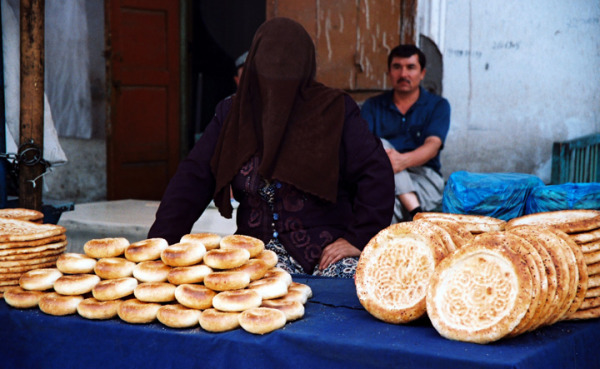salt baked chicken

The circus has come to town for two weeks and set up shop right in front of my Brooklyn apartment. It's actually an Italian neighborhood festival celebrating the "Lady of Mount Carmel" with rides, carnival games, live music, and tons of italian food booths. I've enjoyed it but I won't be sad when it's over. I go to sleep every night with the smell of funnel cakes pumping through my air conditioner and the sounds of an 80s cover band blaring Michael Jackson songs outside my window. Click here to see the view from my window. Saturday afternoon I was walking through the crowds with my dog Nelson, wondering if I should get an Italian sausage or skip right to some fried oreos, when I settled on a booth selling rotisserie chicken. The chickens had been rubbed with salt and oregano and roasted so that meat was succulent and moist. It reminded me of a Chinese dish called Salt Baked Chicken. In the dish, the chicken is rubbed with sichuan peppercorns and five spice powder, wrapped in cloth and covered with a mound of salt, and cooked in a wok. The thick layer of salt traps the heat in keeps the chicken moist and flavorful.
Here is our recipe for Salt Baked Chicken. I cooked it on Sunday and ate it with a side of stir-fried bok choy. Our recipe uses an oven instead of a wok and I think it gets better results. Enjoy.
-Mary Kate
Salt Baked Chicken
3 lb. chicken
1/4 cup shaoxing rice wine
1 tablespoon ginger, minced
3 green onions
4 lb. very coarse salt
1 teaspoon five spice powder
2 teaspoon sichuan peppercorns
1 large piece of cheesecloth
Rinse the chicken under cool water, cut away any fat around the cavity opening, and place the chicken in a large bowl. In a small bowl, combine the rice wine, ginger, green onions. Use a sieve to strain the rice wine mixture over the chicken and place the contents of the sieve in the chicken cavity. Put the chicken in a cool place and let marinate for 30 minutes.
Preheat the oven to 400 degrees. Spread the salt evenly in a casserole dish that is slightly larger that the chicken and bake for 10 minutes. Remove the salt from the oven but leave the oven on. Using a spoon, make a valley in the heated salt by pushing the salt to the sides of the dish. Place the chicken on a dry surface and rub the spice mixture all over the chicken. Wrap the chicken in cheesecloth then place it breast side up in the salt valley. Using the spoon, cover the chicken with salt from the sides of the dish. Make sure the chicken is completely covered with a layer of salt. Bake at bake at 400 degrees for 1 hour. Remove the chicken from the oven and let rest for 30 minutes. Discard the salt and use a cleaver to chop the chicken into chopstick-friendly pieces. Serve.
 recipes
recipes 









